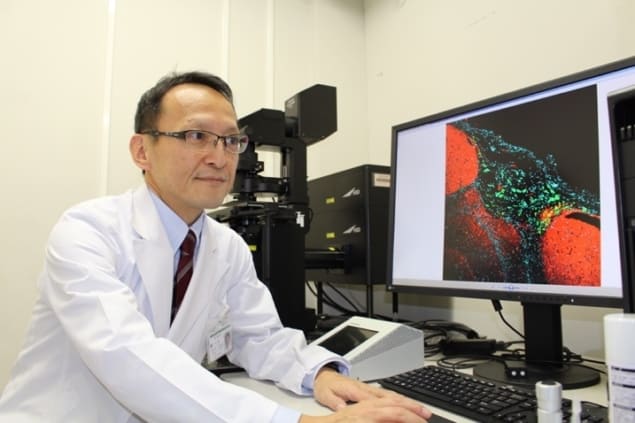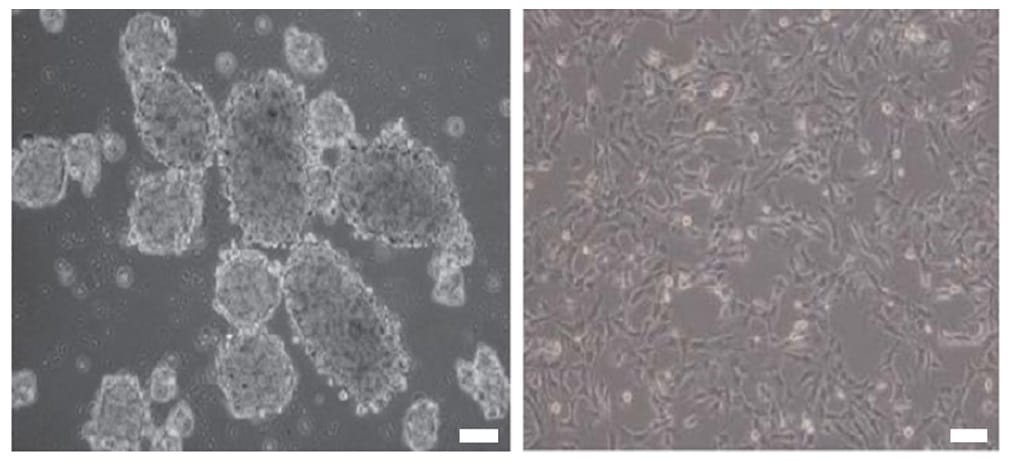
Cancer therapies successfully enable the excision of tumours or destruction of cancer cells. However, the presence of cancer stem cells (CSCs), which can reproduce themselves and initiate tumour progression, may lead to cancer recurrence and resistance to chemotherapies and radiotherapy. Identifying and enriching CSCs for active targeting by anti-cancer drugs could enhance the efficacy of cancer treatments.
CSCs are usually present in tumours in very low numbers, making them difficult to identify. But using hydrogels to create an artificial tumour environment can elevate the percentage of CSCs found in tumours. Scientists from Hokkaido University and the National Cancer Centre Research Institute have developed a novel double-network (DN) hydrogel that rapidly reverts cancer cells into CSCs within just 24 hr. They report their findings in Nature Biomedical Engineering.
High-performance materials for fighting cancer
DN gels contain two networks of polymers with different mechanical properties. In this study, the DN gels incorporate rigid strong polyelectrolyte gels (the first network) and flexible neutral polymer gels (the second network) The resulting material possesses both toughness and exceptional mechanical strength.

This DN gel serves as an artificial microenvironment for inducing cellular responses in CSCs. Principal investigator Shinya Tanaka, from the Institute for Chemical Reaction Design and Discovery, describes the gel as a “potential weapon to fight cancer, with unique applications in regenerative medicine”.
The hydrogel, which has an elasticity similar to the specific microenvironment required by CSCs, could increase stem cell-like behaviour (stemness). This could enable more efficient detection of CSCs, enhance cancer cell type diagnosis, and ultimately help to produce personalized medicines.
To evaluate the effect of DN gels on cancer cells, the team cultured six human cancer cell lines on the hydrogel: sarcoma, uterine cancer, lung cancer, colon cancer, bladder cancer and brain cancer. All the cell lines formed spherical structures within 24 hrs of cell seeding.
The sphere-like shapes on the DN gel contained a large proportion of CSCs, which are seldom found in primary tumours. This indicates that reprogramming of differentiated cancer cells into CSCs is enabled by their interaction with the hydrogel.

The researchers also examined glioblastoma – a malignant brain cancer with a five-year survival rate of only around 8%. The DN gels rapidly induced CSCs in four patient-derived primary brain cancer cell lines. They observed that a protein known as Sox2, which is responsible for cancer cell reprogramming, was highly expressed in the nuclei of sphere-forming cells. Uncovering this phenomenon helps to reveal the molecular mechanism behind hydrogel-inducing stemness in cancer.
In addition, human brain cancer cells cultured on DN gels formed tumours efficiently when transplanted into mice.
The team is currently investigating how the intrinsic properties of the DN gels affect the cancer cells, in particular, to examine how the hydrogel’s chemical characteristics impact the resulting stemness.



